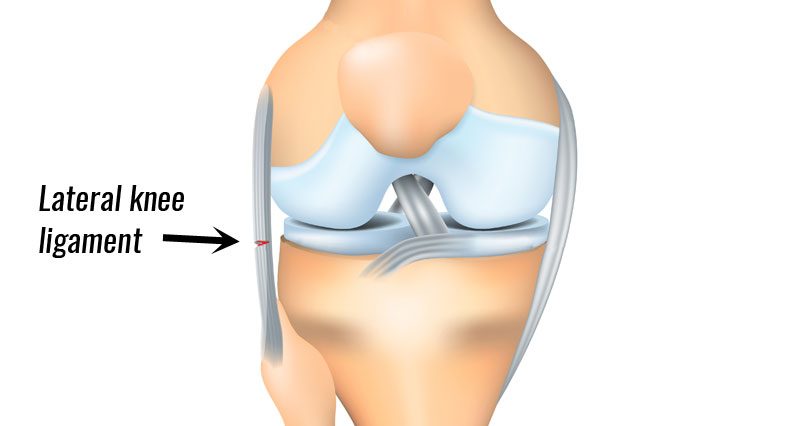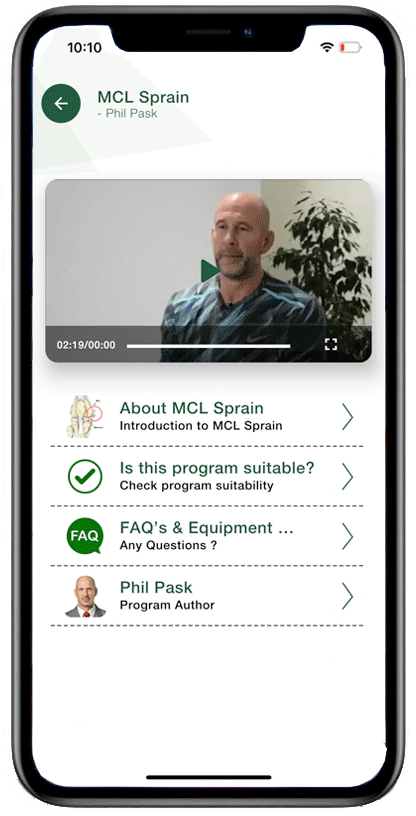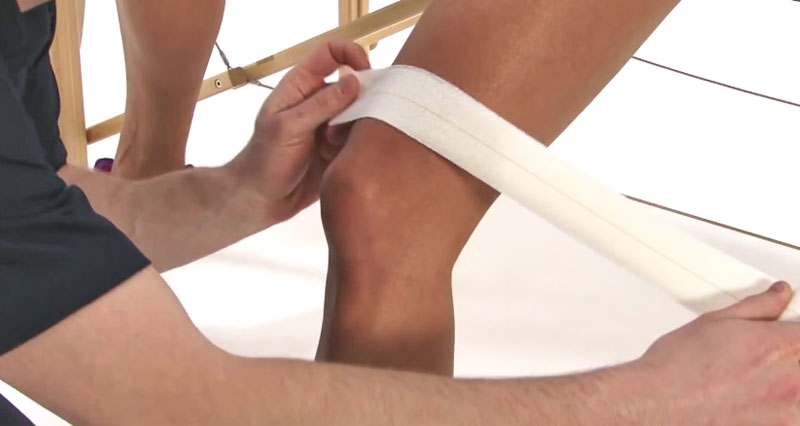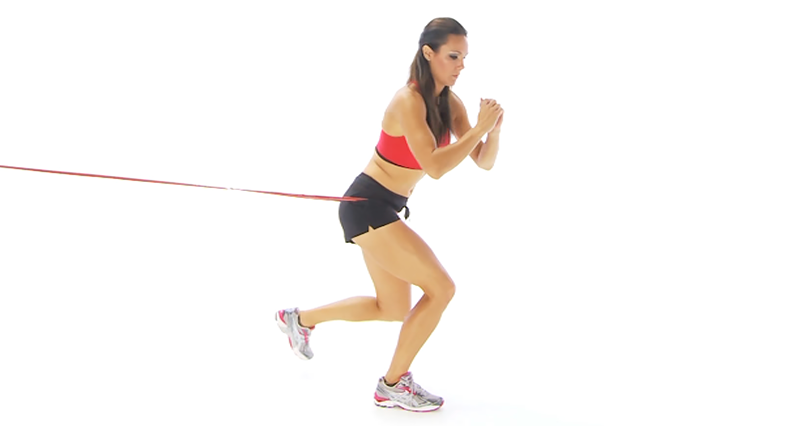An LCL sprain or lateral knee ligament sprain is a tear to the ligament on the outside of the knee. It most commonly occurs following a direct blow to the inside of the knee. However, it can also develop gradually through overuse.
Medically reviewed by Dr. Chaminda Goonetilleke, 13th Dec. 2021
Symptoms of an LCL sprain
The main symptoms of a lateral collateral ligament sprain (LCL sprain) are:
- Pain on the outside of the knee.
- Symptoms vary from being very mild to a complete rupture of the ligament.
- You may have swelling over the outside of the joint, especially with more severe injuries.
Lateral ligament sprains are categorized into grades 1, 2, or 3 depending on the extent of your injury.
Grade 1 LCL sprain
If you have a grade 1 sprain your knee will feel tender on the outside. You will have little or no swelling. However, you will feel pain with the varus stress test (see below), but no joint laxity.
Grade 2 LCL sprain
With a grade 2 LCL sprain, you will have significant tenderness on the outside of your knee. You will likely have some swelling. The varus stress test will indicate pain and some joint laxity. However, you will have a definite endpoint that indicates your ligament is still intact.
Grade 3 LCL sprain
A grade 3 lateral ligament sprain is a complete tear of the ligament. Pain can vary and may be actually less than a grade 2 sprain. You will have significant joint laxity with the varus stress test, with no firm endpoint. Your knee may be very unstable.
A full examination is needed once any pain and swelling have gone down. A painful swollen knee is more difficult to assess.
Varus stress test
The varus stress test is used to help diagnose lateral knee ligament sprains. It stresses the lateral ligament specifically.
Your doctor/physio holds your leg with the knee slightly bent to approx 30 degrees. They stabilize your thigh whilst applying inward pressure on your lower leg.
As a result, the lateral ligament is stretched/stressed. The test is positive if you feel pain on the outside of your knee. The degree of damage can be determined by how much movement/instability is present.
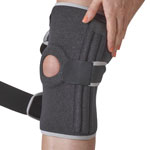
Buy Knee Braces
Imaging
In more serious cases an MRI scan and/or X-Ray may be necessary.
Anatomy
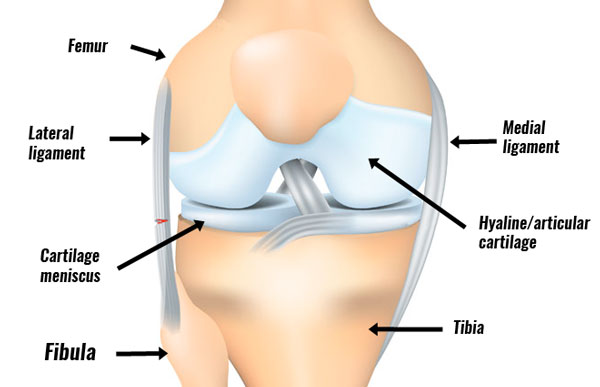
The lateral collateral knee ligament or LCL for short connects the femur (thigh bone) to the top of the fibula (shin bone).
The ligament itself is a narrow strong cord of collagen fibres and its function is to provide stability to the outside of the knee.
The ligament is not connected to the lateral meniscus in the joint like the medial ligament (one the inside) does. Therefore, LCL sprains are not normally associated with cartilage meniscus tears. However, injury to the anterior cruciate ligament or posterior cruciate ligaments can occur at the same time as an LCL sprain.
Causes
The LCL is most commonly injured by a direct impact to the inner surface of the knee. For example, in a rugby or a football tackle. Force on the inside of the knee causes the joint to open on the outside, therefore stretching the lateral ligament.
An LCL sprain is less common than a medial collateral ligament sprain.
Treatment
Treatment consists of immediate first aid PRICE principles (Protection, Rest, Ice, Compression, Elevation). This is followed by a full rehabilitation program.
Cold therapy
Apply a cold therapy and compression wrap as soon as possible after injury. If your injury happened some time ago and you still have swelling then you should also apply cold. Apply ice for 10 to 15 minutes every couple of hours. Reduce frequency as your symptoms improve.
Rest
If your injury is severe, recent, or acute, then you should rest completely until normal daily activities are pain-free.
For the more long-term, chronic injuries then active rest may be more appropriate. This means discontinuing the sport or activity that irritates your injury or causes pain.
Supports & braces
Wear a hinged knee brace to support and protect your joints. This is particularly important for grade 2 and 3 injuries. A hinged knee brace has solid metal supports at the sides. This protects your knee from lateral (sideways) movements, which would stress the lateral knee ligament.

Buy Knee Braces
Taping
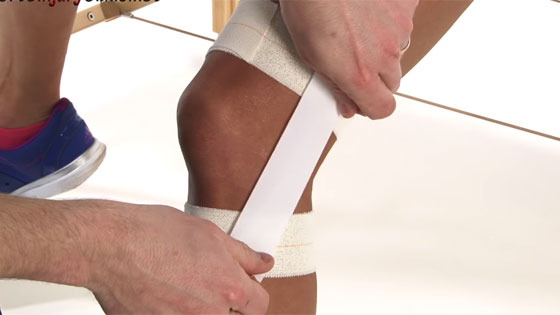
Your physio may apply support taping. This protects and supports your knee whilst it is healing. It may also help with confidence and proprioception as you return to running.
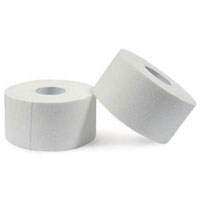
Zinc Ocide Sports Tape
Sports massage for LCL sprains
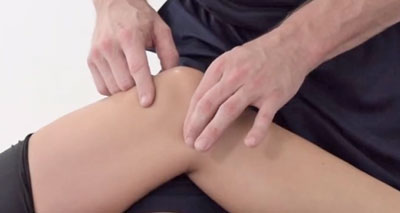
Cross friction massage is applied directly to the ligament. It may help reduce scar tissue formation and re-align the new ligament fibers as they heal.
Before starting any massage treatment your therapist will check for contraindications. If any apply to you, then massage should be avoided.
Cross friction massage also must not be performed during the acute stage. This is usually the first 48 to 72 hours after injury. But for grade two and three strains this could be a week or more.
Apply frictions backward and forwards across the ligament. Start gently and apply deeper frictions as you become accustomed to massage.
Read more: LCL sprain rehabilitation program
LCL sprain exercises & rehabilitation
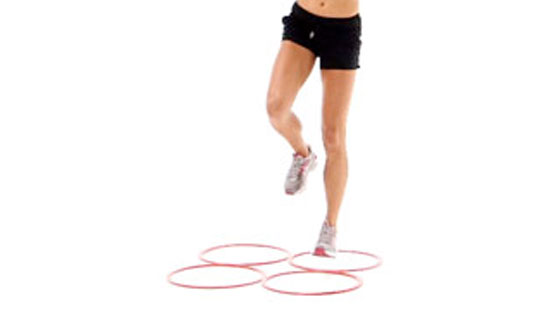
Exercises for rehabilitation of lateral knee ligament sprains should include mobility, stretching, strengthening, proprioception, and eventually sports-specific exercises. Initially, isometric or static strengthening exercises are done. These progress to dynamic knee exercises involving movement. Proprioception exercises involve balance and coordination.
Read more on LCL sprain exercises.
LCL sprain Surgery
In grade 3 sprains, particularly when other structures such as an ACL tear or PCL tear are damaged, surgery may be needed. This is to prevent your knee from being unstable in the future. Your surgeon may suture (stitch) the torn ends of your LCL. Or they may reconstruct the ligament with a part of a tendon, e.g. a hamstring tendon.
References & research
- LaPrade RF, Wentorf FA, Fritts H et al. A prospective magnetic resonance imaging study of the incidence of posterolateral and multiple ligament injuries in acute knee injuries presenting with a hemarthrosis. Arthroscopy 2007;23(12):1341–7
